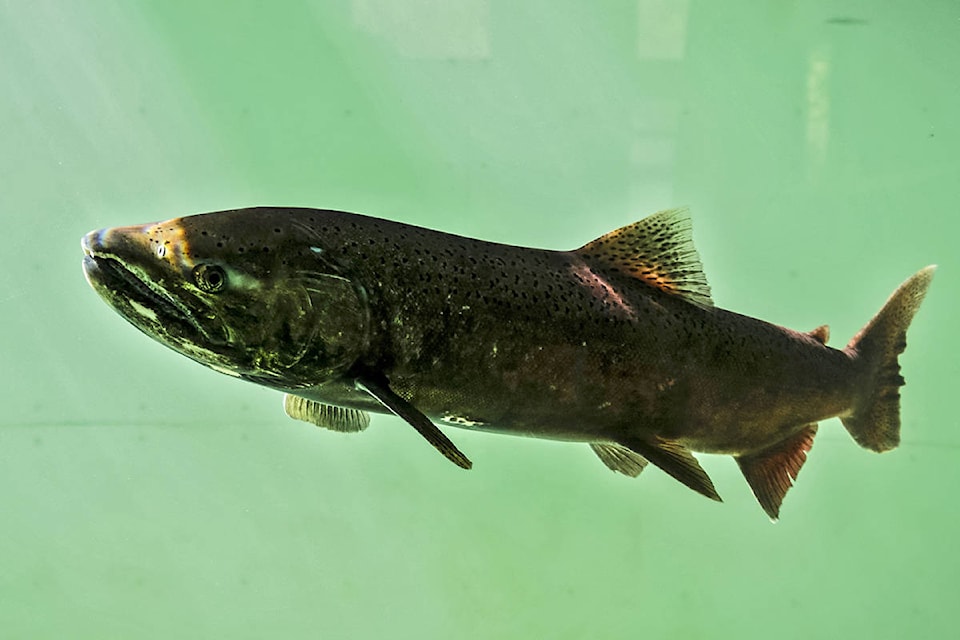Yukon’s chinook salmon fisheries are looking at another year of closure, despite a moderate increase in projected run size.
The Yukon Salmon Sub-Committee submitted its recommended fishery allocations to federal fisheries minister Dominic LeBlanc, who gave the proposal a green light this week.
“We were very pleased with the recommendations and accepted it without any changes,” said LeBlanc at a June 28 press conference in Whitehorse.
Considering the pre-season forecast and consultations with First Nations, the YSSC recommended complete closure of the commercial, domestic, and recreational chinook salmon fisheries. The subsistence fishery for First Nations has been allocated a limited catch until monitoring stations can confirm how many chinook have entered Canadian waters.
Many First Nations have been voluntarily reducing their catch in recent years — taking less than their allocation or closing their fisheries entirely — to help chinook populations rebound.
Between 70,000 and 97,000 chinook are projected to return to the Canadian side of the Yukon River this year.
“Even though that number would meet the spawning escapement goal of 42,500-55,000, it’s still only about half of the historical average,” said Jesse Trerice, executive director of the Salmon Sub-Committee.
Historically, approximately 150,000 chinook salmon would make it back to the Yukon from the Bering Sea annually.
However, years of over-fishing and targeting larger, older fish — which are typically the most fertile females — caused stocks to collapse.
“We also look at the quality of the run, including age class and sex ratio,” said Trerice.
A high quality run would have a high ratio of females — around the historical average of 45 per cent female to 55 per cent male — and include many older fish, which are larger and carry more eggs.
The first numbers out of the sonar project at Pilot Station at the mouth of the Yukon River at the Bering Sea are showing a higher than average ratio of females.
“That is encouraging,” said Trerice. “But we have to remember that is way down at the mouth of the Yukon River.”
Many of the fish that enter the Yukon River don’t make it to, or aren’t destined for, Canada. Canadian-origin chinook make the longest migration of all salmon species and are the largest variety of chinook salmon, which are already the largest salmon sub-species.
As for the age class of this year’s run, things aren’t looking great.
“We used to see a really high number of seven-year-olds, but now they’ve pretty much disappeared,” said Trerice. “Only two per cent of this year’s run is expected to be seven-year-olds.”
Having many fish of the same age in the same run increases the likelihood of inbreeding, further reducing the quality of the run, she said.
However, Trerice remains “cautiously optimistic.”
“Around the third week of July we will have sufficient information based on the assessments being done at Eagle (Alaska) and other places to decide whether to stay the course or change the recommendations this season,” she said, though she isn’t anticipating any allocation for recreational fishing.
Allocations to other fisheries aren’t considered until the upper end of the escapement goal – the actual number of fish that make it to Canada and escape harvest — is reached and First Nations receive their full allocation.
A full First Nations fishery would be 8,000-10,000 chinook. Last year First Nations harvested only about 2,700.
To further complicate matters, Alaska recently opened up fishing in the section of river closest to the Yukon border.
“It’s a bit of surprise to us. We just weren’t expecting that,” said Trerice, who was anticipating limited fishing on the Alaskan side.
There are four major pulses of chinook down the river, with the first being largely from the Canadian side of the border.
“The first pulse of the salmon have been largely protected from harvest in recent years,” said Trerice. “However, they’re fully within their rights to do that. We have a pretty limited influence on how fisheries are managed in Alaska in season.”
Chum salmon are expected to have “great year.” The estimated run size is 350,000 to 425,000 – well above the historical average.
“That’s where we will see opportunities for recreational fisheries,” said Trerice.
The high numbers mean an unrestricted allocation for First Nations.
Because chum have been much more plentiful in recent years, many First Nations have been harvesting them instead of chinook.
“There are some First Nations now using chum and other species to teach and carry on traditions instead of chinook,” said Trerice.
A strong chum run and stronger commitments from the Department of Fisheries and Oceans, are good signs according to Trerice.
“One of the concerns we’ve had in previous years is that for the DFO here to uphold their treaty obligations with the United States on the Yukon River Salmon Agreement, they’ve had to dip into the Yukon River Panel’s enhancement and restoration fund, ” she said. “There’s not a lot left.”
Funds are still needed for monitoring and sonar stations. Recently, LeBlanc committed to getting a new sonar system for the procupine drainage and increasing assessment work.
“Canada will be a much more reliable partner,” he said. “We’re going to up our game.”
Trerice hopes this will contribute to higher chinook runs in the future.
“There are glimmers of hope,” she said. “We need to be planning for a future where there are enough chinook to open a commercial or domestic fishery.”
Contact Andrew Seal at andrew.seal@yukon-news.com
